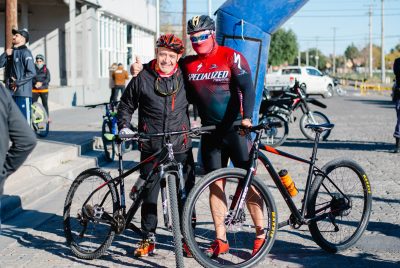Bicycle Safety Tips
Bicycle Safety Tips
As an avid cyclist, I understand the importance of prioritizing safety while enjoying the freedom and thrill of riding a bicycle. Whether you’re a beginner or a seasoned rider, following bicycle safety tips is crucial for your well-being and the well-being of others on the road. In this article, I will share valuable suggestions to help you stay safe while cycling.
Introduction
Cycling offers numerous benefits, from improved fitness to reduced carbon footprint. However, it’s essential to remember that bicycles are considered vehicles, and riders must adhere to safety guidelines. By adopting a proactive approach and practice bicycle safety tips, you can minimize the risk of accidents and enjoy your rides to the fullest.
The Importance of Bicycle Safety
Before delving into specific safety tips, let’s understand why bicycle safety should be a top priority. Cycling accidents can lead to severe injuries, and in some cases, even fatalities. By taking precautionary measures, you not only protect yourself but also contribute to creating a safer environment for all road users.
Essential Safety Gear
Wearing the appropriate safety gear is vital to protect yourself in case of a fall or collision. Here are some key items every cyclist should have:
Helmet
Wearing a properly fitted helmet can significantly reduce the risk of head injuries. Make sure your helmet meets safety standards and fits snugly on your head.

Reflective Clothing
Wearing bright or reflective clothing increases your visibility, especially in low-light conditions. Consider investing in reflective vests, jackets, or ankle bands to enhance your presence on the road.
Lights and Reflectors
Equip your bicycle with front and rear lights, as well as reflectors. Lights help you see the road ahead, while reflectors ensure that others can see you from different angles.
Bike Maintenance for Safety
Regular bike maintenance is essential not only for optimal performance but also for safety. A well-maintained bicycle reduces the likelihood of mechanical failures while riding. Consider the following aspects:
Tire Maintenance
Check your tire pressure regularly and ensure they are inflated to the recommended levels. Inspect the tires for wear and tear, and replace them if necessary. Additionally, learn how to patch or replace inner tubes to be prepared for flats.
Brakes and Gears
Test your brakes to ensure they are working effectively. Adjust them if needed, and replace brake pads when they become worn. Keep your gears properly adjusted for smooth shifting, enhancing control and stability.
Inspection and Lubrication
Regularly inspect your bike for loose or damaged parts, such as bolts, handlebars, and pedals. Lubricate the chain and moving parts to minimize friction and maintain smooth operation.
Rules of the Road
To ensure your safety and the safety of others, it’s important to know and follow the rules of the road. Treat your bicycle as a vehicle and obey traffic laws. Here are some key rules to remember:
Traffic Signals and Signs
Obey traffic signals, including traffic lights and stop signs. Signal your intentions using hand signals to communicate with motorists and other cyclists.
Right-of-Way
Understand right-of-way rules and yield to pedestrians and vehicles when necessary. Be cautious at intersections and yield to oncoming traffic when making a turn.
Lane Positioning
Choose the appropriate lane position based on your direction and road conditions. Ride in a predictable manner, staying to the right side of the lane and allowing enough space for passing vehicles.
Visibility and Communication
Enhancing your visibility and effectively communicating with others on the road is crucial for safety. Consider the following tips:
Use Lights and Reflectors
Use bright, front and rear lights, especially when riding at dusk, dawn, or during low-light conditions. Install reflectors on your bicycle to increase visibility from various angles.
Wear High-Visibility Clothing
Opt for brightly coloured clothing that stands out on the road. Fluorescent colours like yellow, orange, or green are highly visible, even during the day.
Hand Signals
Signal your intentions using hand signals to indicate turns, stops, or lane changes. Clearly communicate your actions to motorists and other cyclists, allowing them to anticipate your movements.
Riding in Different Environments
Adapting to different riding environments is essential for maintaining safety. Consider these tips for specific riding conditions:
Urban Riding
In urban areas, be aware of traffic patterns, pedestrians, and parked vehicles. Stay vigilant and anticipate potential hazards, such as opening car doors or sudden lane changes.
Rural Riding
In rural areas, be cautious of narrow roads, limited visibility, and fast-moving vehicles. Ride closer to the right side of the lane, be mindful of blind corners, and use caution when passing or being passed.
Shared Paths and Trails
When riding on shared paths or trails, be considerate of other users, such as pedestrians and joggers. Slow down, give audible warnings when passing, and respect any posted rules or guidelines.
Sharing the Road with Motorists

Interactions with motor vehicles require extra caution and communication. Follow these tips to share the road safely:
Be Predictable
Ride in a straight line, maintaining a steady pace to allow motorists to anticipate your movements. Avoid sudden swerves or changes in direction.
Make Eye Contact
When possible, make eye contact with drivers at intersections or when merging. This helps ensure that they see you and understand your intentions.
Be Defensive
Assume that motorists may not see you and take defensive measures. Stay alert, use mirrors if available, and be prepared to react quickly to any potential hazards.
Riding at Night
Riding at night introduces additional challenges, but with the right precautions, it can be done safely. Follow these tips:
Use Lights and Reflectors
Illuminate your bicycle with bright front and rear lights. Use reflectors on your bike, pedals, and clothing to maximize visibility.
Wear Reflective Clothing
Wear reflective clothing or accessories that enhance your visibility in the dark. Reflective vests, ankle bands, or tape are excellent choices.
Avoid Dark Clothing
Choose light-coloured or reflective clothing over dark colours, as they are less visible to motorists at night.
Riding in Groups
Cycling in a group can be enjoyable and enhance safety when done correctly. Here’s how to ride safely in a group:
Communication is Key
Establish clear communication signals within the group, such as hand signals or verbal cues, to indicate turns, stops, or obstacles on the road.
Maintain Formation
Ride in a staggered formation when cycling in a group. This allows for better visibility and provides enough space between riders to maneuver safely.
Watch for Each Other
Stay attentive to the movements of other riders in the group. Signal and communicate any hazards or changes in speed to ensure everyone stays safe and together.
Being Mindful of Pedestrians
Respecting pedestrians’ rights and safety is essential when sharing paths or sidewalks. Follow these guidelines:
Yield to Pedestrians
Always yield to pedestrians and give them the right-of-way. Slow down and pass them at a safe distance, providing ample space for both parties.
Be Courteous and Alert
Stay alert for pedestrians crossing the road or unexpectedly entering your path. Slow down in crowded areas and be courteous when interacting with pedestrians.
Dealing with Hazards
Encountering hazards on the road is inevitable, but knowing how to handle them can prevent accidents. Consider the following tips:
Potholes and Obstacles
Scan the road ahead for potholes, debris, or other obstacles. Signal and communicate these hazards to riders behind you, allowing them to react accordingly.
Railroad Crossings
Approach railroad crossings with caution, as the tracks can be slippery. Cross them at a 90-degree angle to avoid getting caught in the tracks.
Weather and Bicycle Safety
Weather conditions can significantly impact cycling safety. Stay prepared and adapt to different weather scenarios:
Rainy Conditions
Reduce speed and increase following distance when riding in the rain. Brake gently to avoid skidding, and be cautious of slippery surfaces.
Hot Weather
Stay hydrated and dress appropriately for hot weather. Protect yourself from the sun, wear sunscreen, and take breaks if needed to avoid overheating.
Staying Alert and Focused
Maintaining focus and being attentive while cycling is crucial for your safety. Follow these guidelines:
Avoid Distractions
Avoid using electronic devices or headphones while riding, as they can divert your attention from the road. Stay focused on your surroundings.
Watch for Car Doors
Stay mindful of parked cars and be cautious of opening doors. Leave enough space between yourself and parked vehicles to avoid collisions.
Bicycle Security and Theft Prevention
Protecting your bicycle from theft is essential. Implement these security measures:
Locking Your Bicycle
Invest in a sturdy lock and use it to secure your bicycle, even if you’re only leaving it unattended for a short period. Lock both the frame and wheels to a fixed object.

Choose Secure Parking
When parking your bicycle, opt for well-lit areas with surveillance cameras if possible. Avoid leaving your bike in isolated or high-crime areas.
Conclusion
Prioritizing bicycle safety is a responsibility that all cyclists share. By following the tips and guidelines mentioned in this article, you can significantly reduce the risk of accidents and enjoy your rides with peace of mind. Remember, safety should always come first, and by being proactive, you contribute to a safer cycling community.
FAQs (Frequently Asked Questions)
1. How important is wearing a helmet while cycling?
Wearing a helmet is crucial for protecting your head in case of a fall or collision. It significantly reduces the risk of severe head injuries and can save your life in the event of an accident. Always wear a properly fitted helmet when cycling.
2. Are hand signals necessary if I’m riding alone?
While hand signals are primarily used for communication within a group, they are still valuable when riding alone. Hand signals help motorists and pedestrians understand your intentions, promoting safer interactions on the road.
3. What should I do if I encounter a hazardous road condition while cycling?
If you come across a hazardous condition such as a pothole or debris on the road, it’s important to signal and communicate the hazard to riders behind you. This gives them time to react and avoid the obstacle, preventing accidents or injuries.
4. How can I protect my bicycle from theft?
Investing in a sturdy lock and using it to secure your bicycle is essential. Lock both the frame and wheels to a fixed object. Additionally, choose secure parking areas that are well-lit and preferably monitored by surveillance cameras.
5. Is it safe to ride a bicycle at night?
While riding at night poses additional challenges, it can be safe with the right precautions. Ensure your bicycle is equipped with bright front and rear lights, wear reflective clothing, and avoid dark-colored clothing that makes it harder for motorists to see you. Be cautious, alert, and follow all traffic rules and regulations.
Remember, prioritizing bicycle safety is not only about protecting yourself but also about respecting and ensuring the safety of others on the road. By incorporating these tips and guidelines into your cycling routine, you can enjoy your rides while minimizing the risk of accidents. Stay safe and happy cycling!





Comments are closed.